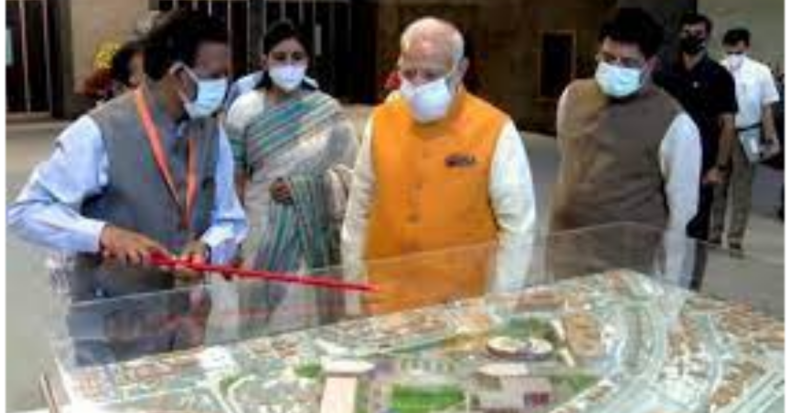“Gati Shakti combines many departments for the coordinated development of projects from road to railroads, aviation to agriculture,” Prime Minister Narendra Modi said at the launch of the PM Gati Shakti Master Plan.
Prime Minister Narendra Modi unveiled an Rs. 100 lakh crore national master plan for multi-modal connectivity at Pragati Maidan in New Delhi on Wednesday.
The plan aims to expand infrastructure to cut logistic costs and stimulate the economy. The platform’s debut was also attended by Union Minister Piyush Goyal and Ashwini Vaishnav.
During the event, Minister of Commerce and Industry Piyush Goyal addressed and said, “PM Gati Shakti’s National Master Plan will offer various development programs a boost and direction, as well as encourage investment.
The G20 summit will be hosted here for the first time in 2024, under Prime Minister Modi’s leadership.”
Mr. Modi claimed that “the subject of infrastructure has not been a priority for most of India’s political parties” because “certain political parties” have criticized building initiatives that he believes are vital for the country.
The PM further added that the initiative intends to give projects more power and speed by integrating all related departments on a single platform.
Infrastructure programs from multiple ministries and state governments will be created and implemented with a shared vision.
“Even Though it is generally known that the establishment of excellent infrastructure for sustainable development
is a proven manner that gives rise to numerous economic activities and produces employment on a big scale,” he pointed out, “this is not even visible in their platform.”
PM Modi claimed that taxpayers’ money has been ‘insulted’ in the past due to a sluggish approach to development work,
with departments operating in compartments and no coordination. The Prime Minister said that there was a large gap between macro planning and micro implementation due to a lack of coordination and advanced information sharing as departments think and work in silos,
citing common examples of roads being built only to be dug up again for work necessitated by other utilities such as water.
He claimed that as a result, development was being slowed, and budget resources were being squandered.
He cited the first interstate natural gas pipeline as an example, stating that it was completed in 1987.
Between now and 2014, 15,000 kilometers of natural gas pipeline were constructed, and the new gas pipeline is currently being built over 16,000 kilometers.
Similarly, compared to 3,000 kilometers of railway line electrification in the five years prior to 2014, 24,000 kilometers have been electrified in the last seven years.
The metro rail network has grown from 250 kilometers in 2015 to 700 kilometers in 2016, with work on another 1,000 kilometers underway,
he said, adding that 1.5 lakh village panchayats have been connected to the optic fiber network in the last seven years, compared to only 60 in the five years prior to 2014.
Aim of PM Gati Shakti Platform
The PM Gati Shakti plan entails the construction of a standard umbrella platform via which infrastructure projects may be efficiently planned and implemented through real-time collaboration across multiple ministries and departments.
There will be more efficient implementation of infrastructure projects, less information asymmetry between ministries, less working in silos, and fewer delays due to lack of coordination
between various government agencies with more visibility and availability of information and data on a real-time basis.
It has been prepared to depict economic zones and the infrastructure linkages that are required to support them, as well as to integrate project planning and design with a familiar and holistic vision, according to the PMO.
The Gati Shakti platform also aims to increase industry productivity, support local manufacturers, improve industry competitiveness, and assist in the development of new opportunities for the creation of future economic zones.
Vessel turnaround time at ports has been reduced from 41 to 27 hours, and efforts are being made to reduce it, even more, he said,
noting that 4.25 lakh circuit kilometers of power transmission line have been laid in the five years prior to 2014, compared to 3 lakh circuit kilometers in the five years prior to 2014.












